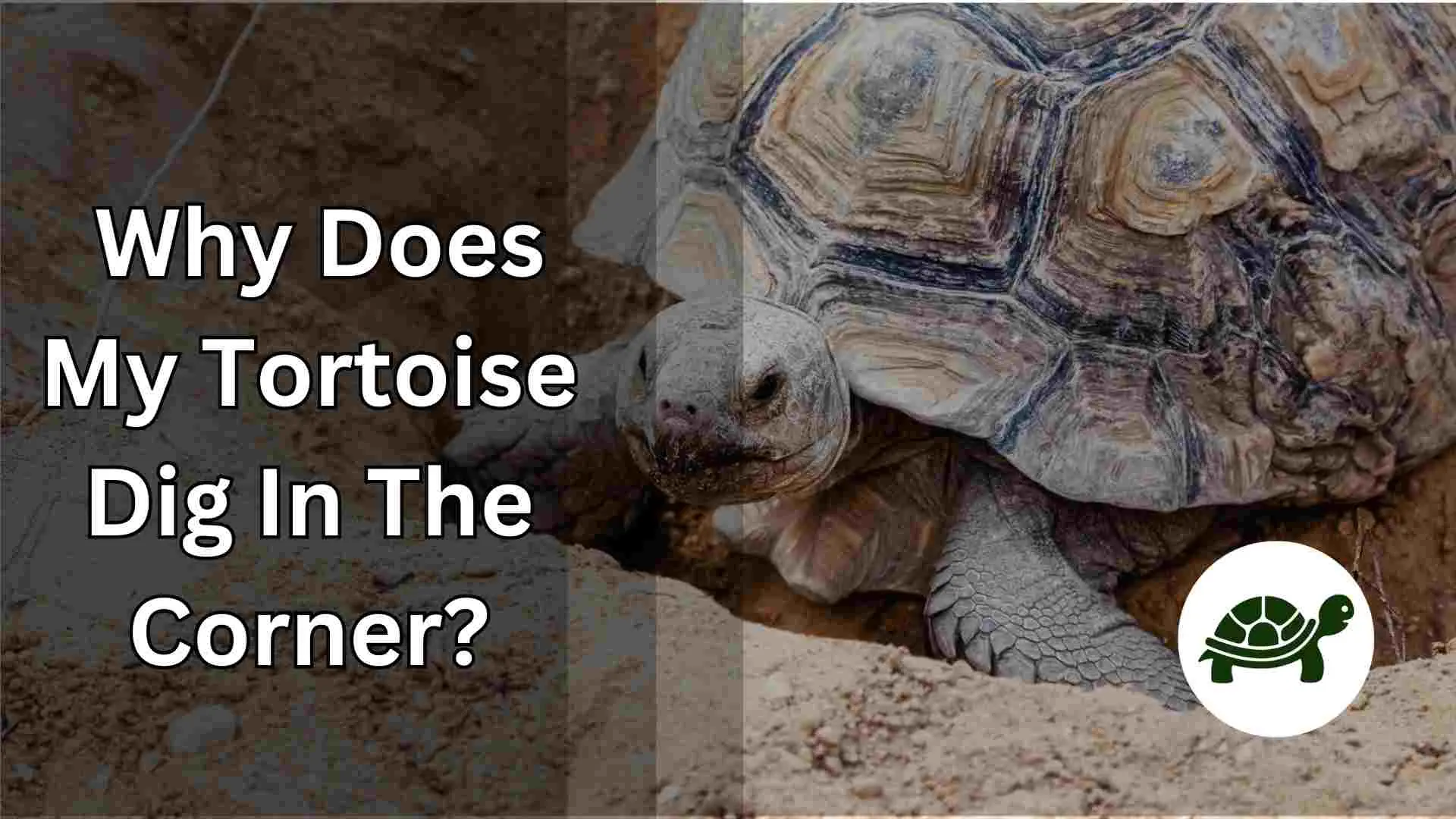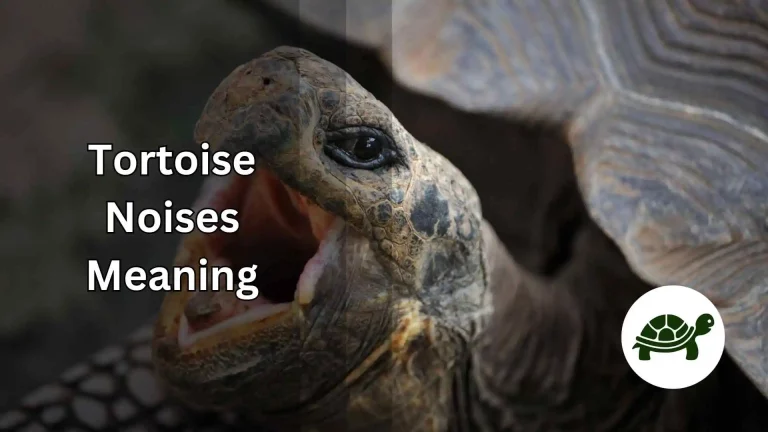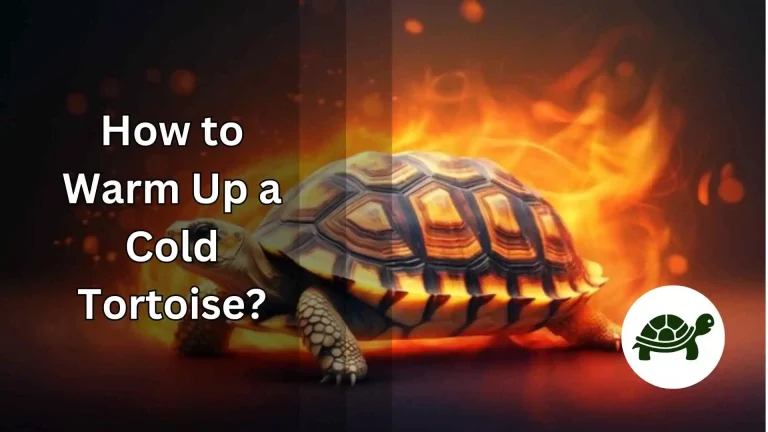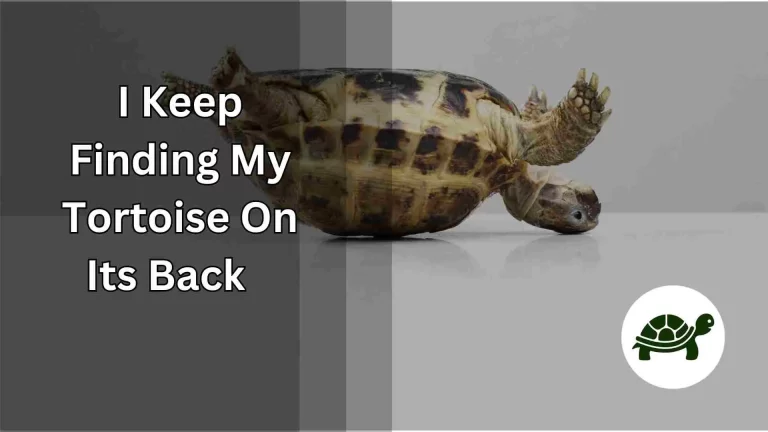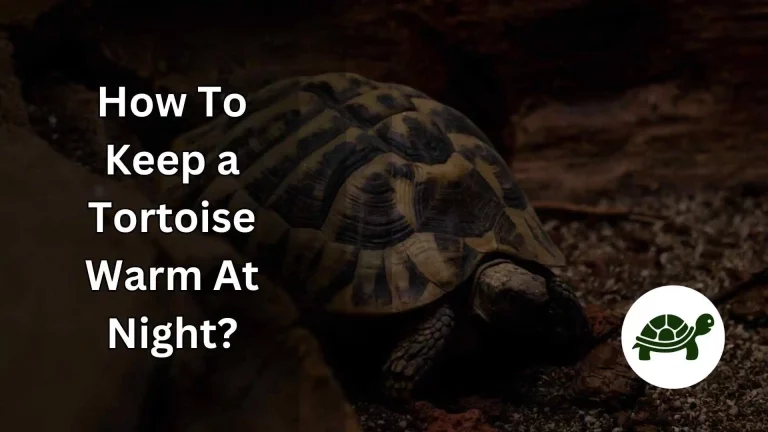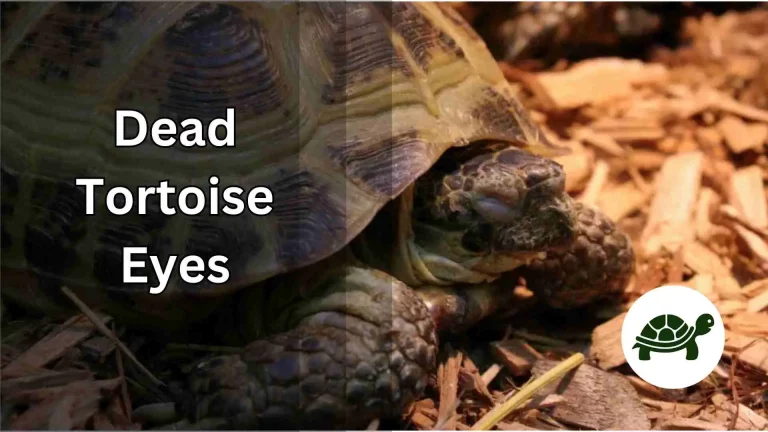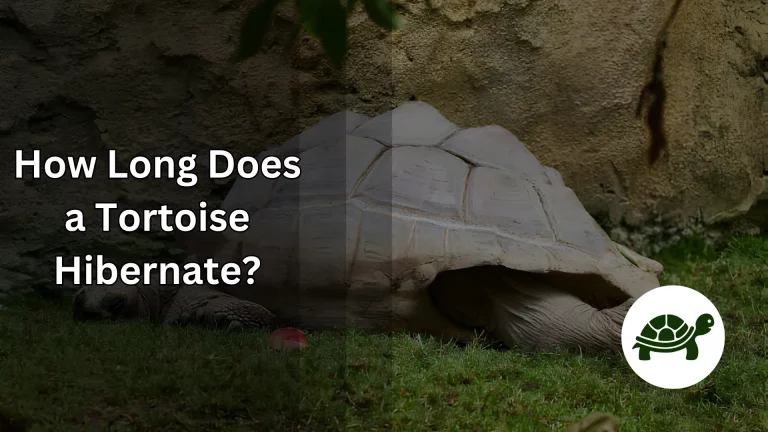Why Does My Tortoise Dig In The Corner? – Know Why
As pet enthusiasts, observing the curious behaviors of our beloved animals is one of the joys that come with their companionship. If you’re a tortoise owner, there’s a good chance you’ve found yourself peering into their enclosure only to catch them industriously digging away in a corner. This behavior, often leaving owners both amused and baffled, isn’t merely a random act of play.
In the vast landscapes of their natural habitats, tortoises have evolved with certain instincts and behaviors, crucial for their survival. Digging, in particular, has been a pivotal aspect of their existence. But what does this mean for our domesticated friends who are miles away from the wild yet display the same tendencies?
This article aims to unravel the reasons behind this intriguing behavior. Whether it’s a mere echo of their wild instincts, a sign of an underlying issue, or just a tortoise’s way of expressing itself, we’ll delve deep to understand the “why” behind the dig.
Natural Instincts: A Glimpse into the Wild
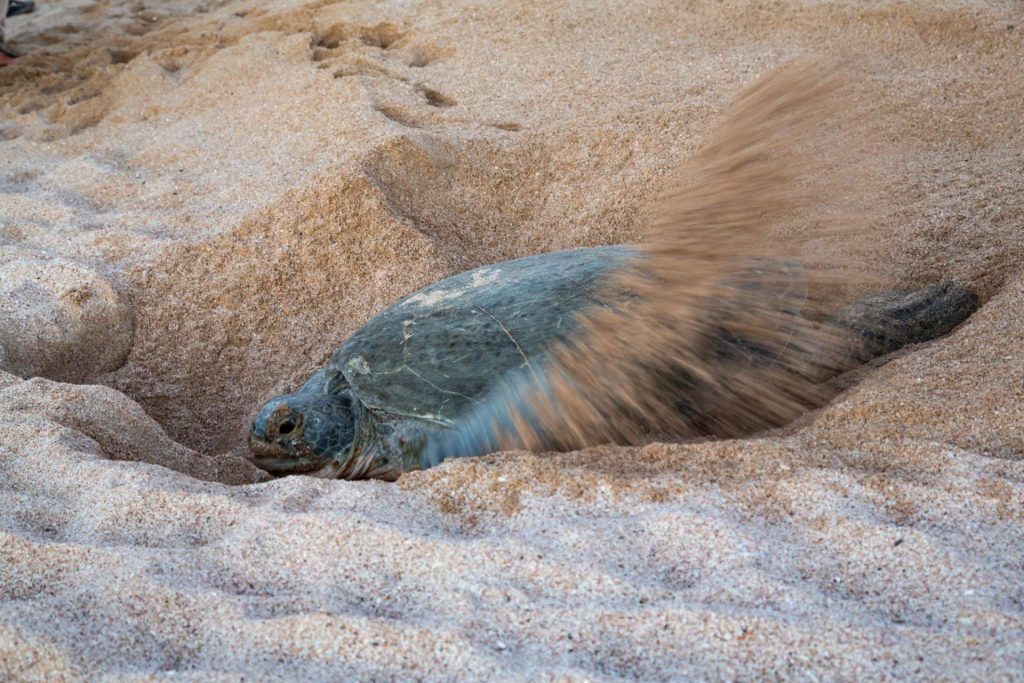
Before domestication and cozy enclosures, tortoises roamed expansive natural habitats, from arid deserts to lush grasslands. Each environment presented its unique challenges and rewards, shaping the behaviors of these remarkable reptiles. Digging, as we’ll discover, played a central role in their day-to-day life.
In the wild, tortoises are not atop the food chain. Their hardy shells offer protection, but the wild is unpredictable. Digging becomes more than a pastime; it’s a survival tactic. Burrowing into the earth provides a refuge from predators, an escape from extreme weather conditions, and a nesting ground. The sensation of earth beneath their feet and around their bodies is a familiar comfort, deeply ingrained in their DNA.
Even within the confines of our homes and gardens, a tortoise’s ancient instincts are alive and kicking. When you witness your tortoise dig in the corner of its enclosure, it’s a testament to millions of years of evolution and survival. While their surroundings might have changed, the innate drive to dig, burrow, and explore remains as vibrant as ever.
Common Reasons Why Tortoises Dig
At first glance, it might seem like a whimsical activity. Yet, the digging behavior of tortoises is multifaceted, driven by various instincts and needs. Whether in the wild or in an enclosure, understanding these reasons can offer insight into their well-being and ensure they lead a contented life.
Nesting Behavior (in Female Tortoises)
Female tortoises have an innate drive to prepare a safe place for their offspring. Even if not pregnant, this nesting behavior can manifest. They might dig extensively, creating a pit to lay their eggs, which, in captivity, might not even be fertilized. Recognizing this behavior, especially during breeding seasons, can help owners provide an accommodating environment.
Seeking Shelter and Safety
A tortoise’s shell is its primary defense mechanism, but sometimes, they seek additional security. Digging and burrowing allow them to hide from perceived threats or simply take a quiet, undisturbed nap. In the safety of their enclosures, this behavior often mirrors their wild instincts to protect themselves from predators.
Thermoregulation
Tortoises are ectothermic, meaning their internal body temperature is influenced by their environment. Digging helps them regulate this. On hot days, they might dig to find cooler spots in the ground, and during cooler times, they might seek the warmth retained underground. Observing when and how your tortoise digs can be a telling sign of its comfort level regarding temperature.
Exploration and Enrichment
Curiosity isn’t limited to cats! Tortoises, in their own steady way, are explorers. Digging can be a form of sensory enrichment, a way to engage with their environment, and keep their minds and bodies active. An engaged tortoise is often a happy one, and this behavior might be an indication of their contentment or their need for more stimulation.
Health Concerns
While digging is natural, excessive or frantic digging might indicate underlying health concerns or stress. It’s essential to be vigilant about sudden changes in their behavior. Regular health check-ups and a keen observation can ensure that your tortoise’s digging habits remain a sign of its natural instincts and not a cry for help.
Addressing the Behavior: What Should You Do?
A Gentle Approach: Just as we seek to understand the nuances of human behavior, it’s essential to address the digging habits of our shelled companions with empathy and knowledge. Instead of discouraging them outright, consider why they might be engaging in such behavior and how you can adapt to their needs.
Proper Enclosure Setup
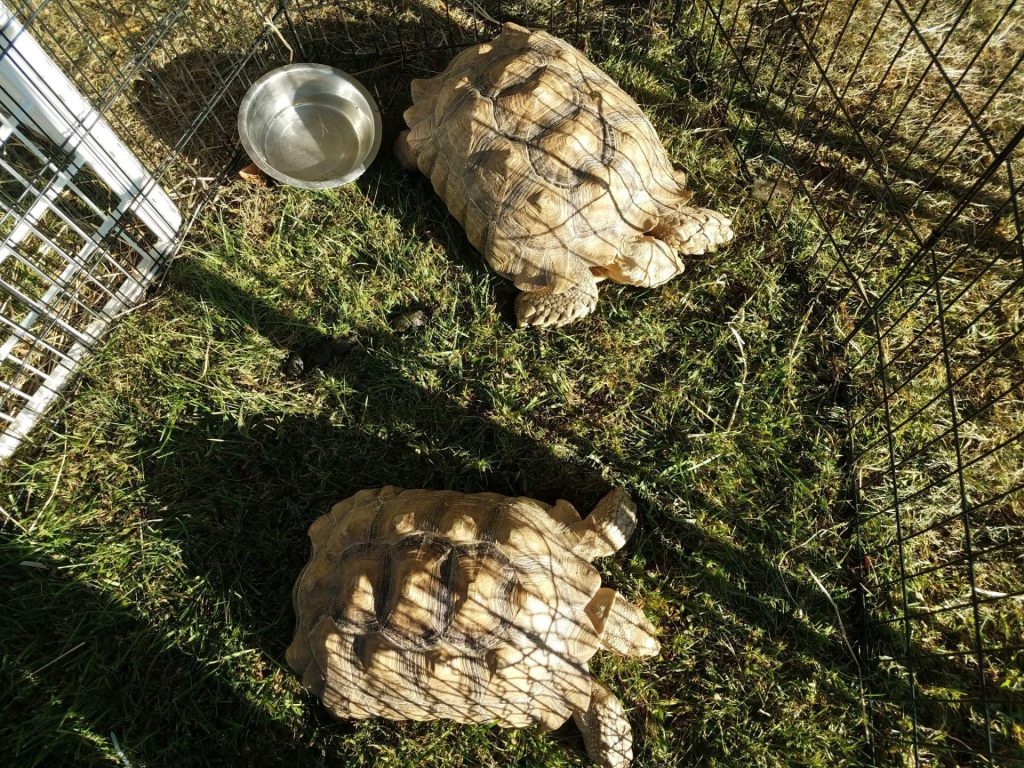
One of the foundational steps in ensuring your tortoise feels at home is by optimizing their enclosure. Use a substrate that mimics their natural environment, allowing them to dig and burrow without hindrance. Ensure it’s free of sharp objects and is deep enough for their explorations. An enclosure that caters to their digging needs can prevent potential injuries and ensure they remain mentally stimulated.
Observing Your Tortoise
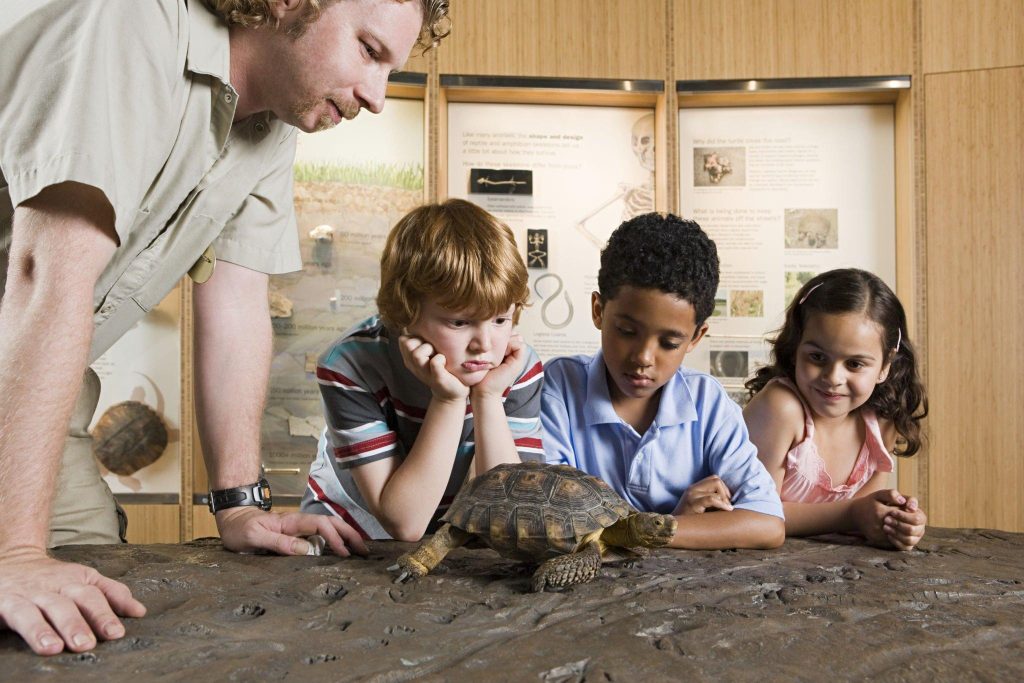
Be the keen observer of your pet’s universe! Monitoring their digging habits can offer a wealth of information about their state of mind and health. For instance, a sudden increase in digging might hint at discomfort, while sporadic digging can indicate contentment. The key is to watch without intervening immediately, understanding patterns over time.
When to Consult a Vet
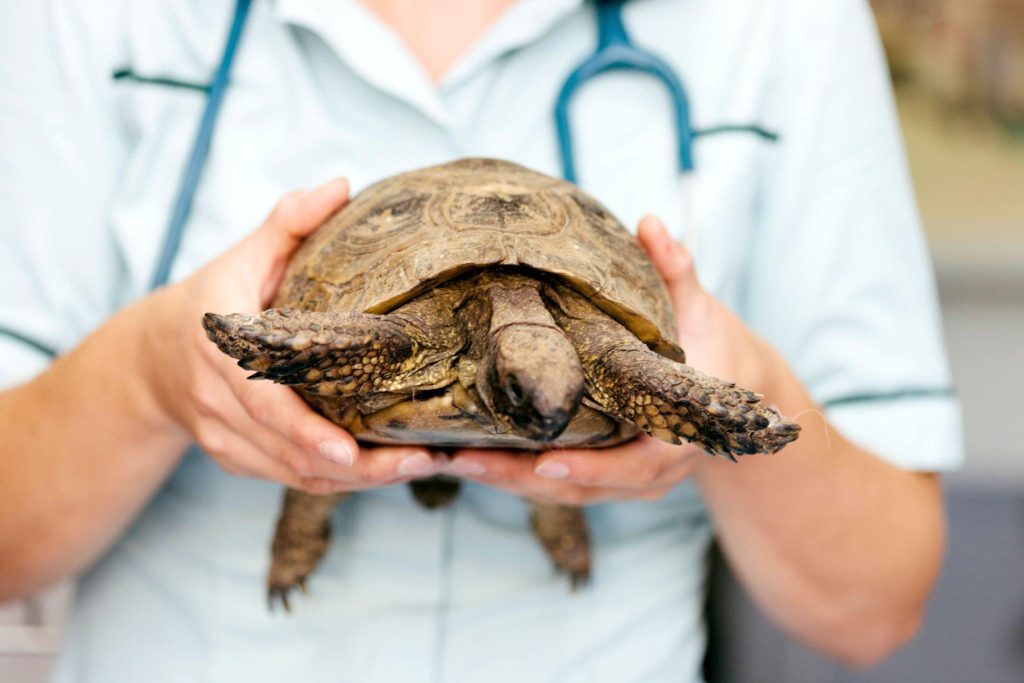
While digging is a natural behavior, there are times when it may signal health or emotional concerns. If you notice signs of distress, frantic digging, or any other unusual behavior accompanying their burrowing habits, it’s wise to consult a reptile-savvy veterinarian. Regular check-ups and a professional’s perspective can ensure that your tortoise’s digging remains a natural expression and not a symptom of deeper issues.
Frequently Asked Questions (FAQs)
Understanding Tortoise Behavior Through Queries: As tortoise enthusiasts, questions are bound to pop up as we observe and care for these fascinating reptiles. Let’s address some of the most commonly asked questions about their digging habits and more:
1. Why is my tortoise digging more than usual?
Seasonal changes, temperature fluctuations, or breeding seasons can influence increased digging activity. However, if it seems excessive or accompanied by other unusual behaviors, it may be best to consult with a vet to rule out any health concerns.
2. Is there a specific type of substrate best suited for tortoises that like to dig?
Absolutely! A mixture of coconut coir, organic topsoil, and play sand often replicates their natural environment, allowing for easier digging. Ensure the substrate is free of chemicals and pesticides, and it’s deep enough for your tortoise’s burrowing adventures.
3. Can digging be a sign of stress in tortoises?
While digging is a natural behavior, abrupt and frantic digging could be indicative of stress or discomfort. Factors like abrupt changes in their environment, disturbances, or health issues can contribute to stress-induced digging.
4. How can I enrich my tortoise’s environment beyond providing a good substrate?
Consider adding safe plants, rocks, or hidey-holes to their enclosure. These additions provide mental stimulation, opportunities for exploration, and additional hiding spots. Rotating toys or introducing new safe items occasionally can also keep their environment fresh and engaging.
5. My tortoise doesn’t dig at all. Is that normal?
Yes, individual tortoises have varying behaviors. Some might not have as strong a digging instinct as others, or they may feel content and secure without the need to burrow. As long as they appear healthy and active in other ways, there’s no immediate cause for concern.
Conclusion
Observing our tortoises dig, burrow, and explore offers a captivating glimpse into their natural instincts and behaviors. These actions, deeply rooted in their evolutionary journey, serve as gentle reminders of the wild landscapes from which they hail. As responsible tortoise guardians, embracing this knowledge equips us to provide environments that respect their innate needs, ensuring they lead enriched and fulfilled lives.
It’s essential not merely to be passive observers but proactive caregivers. By addressing their digging habits with understanding, empathy, and appropriate actions, we bridge the gap between their wild instincts and domesticated lives. And in doing so, we fortify the bond we share with these remarkable reptiles, ensuring a harmonious coexistence.

